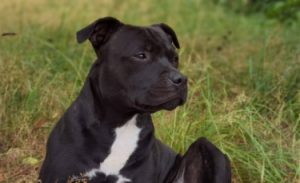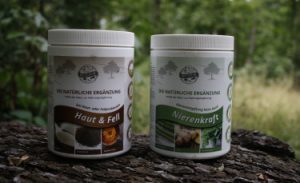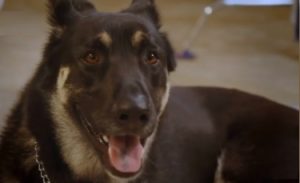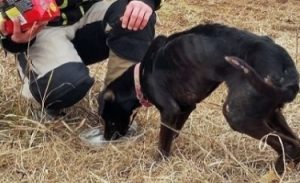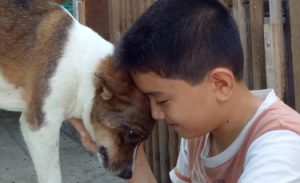Other names: Welsh Terrier, Wales Fox
The Welsh Terrier is a small, well-proportioned and compact dog. Its construction allows it to be both fast and agile. The gaits of the Welsh Terrier are characterized by straight and ample movements of the forelegs as well as the hindquarters.
<!–
–>
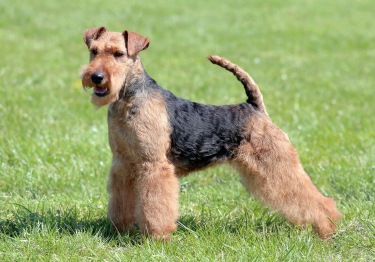
| Short | |
| Britain | |
| Small | |
| Long |
| Sex | Weight | Cut |
|---|---|---|
| Female | From 9 kg to 10 kg | From 36 cm to 39 cm |
| Male | From 9 kg to 10 kg | From 36 cm to 39 cm |
History of the breed
the Welsh terrier is, as its name suggests, originally from Wales . The breed was first developed for fox, badger, hare and otter hunting. It has the same origins as the Lakeland Terrier . The Welsh Terrier was presented for the first time in a dog show in the late eighteenth century.
The Welsh Terrier breed was recognized by the British Kennel Club in 1886, then definitively by the FCI (Fédération Cynologique Internationale) on October 23, 1954. Its official FCI standard in force was published on October 13, 2010.
Welsh Terrier Pictures
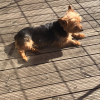
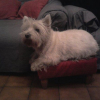
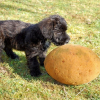
View all Welsh Terrier photos from Woopets members
Physical features
Behavior and character
| Affectionate | |
|---|---|
| Calm | |
| Protective | |
| Independent | |
| Hunter | |
| Barks / howls |
Behavior with others
| Cohabitation with children | |
|---|---|
| Sociable with other animals | |
| Love strangers |
the Welsh Terrier is a dog full of enthusiasm and joie de vivre . He is both affectionate and lively , so he gets along very well with children . Docile and hardworking, the Welsh Terrier is a dog that is easy to learn and manage. He is neither fearful nor aggressive, but knows how to be respected when necessary.
The Welsh Terrier
is it right for you? Take the test!
Education
| Clever | |
|---|---|
| Obedient |
The education of the Welsh Terrier does not involve any particular constraint, given its docility and the will it shows when it comes to work and learn. The methods of positive reinforcement , relying on encouragement and rewards, make it possible to educate the Welsh Terrier in the best conditions. It is also important to socialize it from an early age .
Living conditions
| Suitable for apartment living | |
|---|---|
| Good for new masters | |
| Love it hot | |
| Love the cold |
the Welsh Terrier prefers wide open spaces and proximity to nature over cramped living environments, but can adapt to an urban setting if walked around enough. It is suitable for active masters, willing to take it for a walk and often stimulate it. It is not suitable for families who own rodents as pets, as it may have retained some of its burrowing instincts and therefore began to pursue them.
Health
| Solid | |
|---|---|
| Ease of gaining weight |
the Welsh Terrier is a robust and healthy dog. There are nevertheless some predispositions to pathologies in this breed, in particular Legg-Perthes-Calvé disease (aseptic necrosis of the femoral head) and dermatomyositis.
Hypoallergenic breed
No
Litter size
Between 4 and 6 puppies
| Major concerns |
|
||||
| Minor concerns |
|
| Occasional concerns |
|
||
| Suggested tests |
|
To protect yourself from these risks and insure your companion in the event of health problems, Woopets recommends Welsh Terrier dog insurance .

function showAssuranceForm () {var siteReferer = var id_race_association = ‘287’; //console.log(id_race_association);success: function (html) {}});}document.addEventListener (‘DOMContentLoaded’, () => {$ (‘# assuranceModalBanner’). on (‘show.bs.modal’, function (event) {showAssuranceForm ();});});
Life expectancy
Minimum: 12 years old
Maximum: 14 years
The life expectancy of a Welsh Terrier is, on average, between 12 years and 14 years.
Calculate the human age of your Welsh Terrier!
To choose… 1 year 2 years 3 years Four years 5 years 6 years 7 years 8 years 9 years 10 years 11 years old 12 years 13 years 14 years old 15 years old 16 years old 17 years 18 years old 19 years old 20 years 21 years old
Maintenance and hygiene
| Ease of maintenance | |
|---|---|
| Cost of maintenance | |
| Hair loss |
| Drool level | |
|---|---|
| Ease of grooming |
the Welsh Terrier remains subject to an almost permanent molt, with continuous hair loss, but not significant. Its maintenance is not particularly restrictive and must be carried out on a regular basis.
It is recommended to brush the dog 2-3 times a week to get rid of dead hair and debris. He does not need frequent baths; a bath every 3 or 4 months , with a mild shampoo suitable for dogs.
Her teeth need to be brushed regularly to eliminate tartar build-up and the proliferation of bacteria. Finally, if they do not wear out naturally, its claws need to be cut. If you are new to this, it is recommended that you seek advice from a veterinarian or groomer.
Price and budget
Purchase price
Mini
700 € Maxi
1200 €
The purchase price of a Welsh Terrier is between 700 € and 1200 €.
Annual maintenance cost
Mini
€ 450 Maxi
650 €
The annual maintenance cost of a Welsh Terrier is between 450 € and 650 €.
No name is currently proposed. Use our tool to find your Welsh Terrier’s name!
Food
The Welsh Terrier needs a high quality diet , appropriate for its age, size and level of exercise. Its food is to be divided into 2 meals per day .
Want the best for your dog?
Create the tailor-made diet for your Welsh Terrier
I discover !
PROMO -30% | Delivered to you!

Physical activity
| Athletic | |
|---|---|
| Energy level | |
| Potential to play |
the Welsh terrier is an active dog and must therefore be able to benefit from long daily outings. He loves the game and appreciates the activities shared with his master.
Competitions
| Classifications & Standards |
|
Others
| Master character <span class="btnTooltip qTip2" title="- Calm: the master must be gentle and know how to show patience. – Active: the owner must be energetic and dynamic to live in harmony with his dog. – Hyperactive: the owner must be stimulating and very restless to suit the temperament of his dog.”> |
Active |
|---|
We talk on the forum
welsh terrier / AIREDALE TERRIER
Guest message
welsh terrier
Guest message
Welsh pony
Message from mimidu28
Article on shih tzus, chihuahuas, bichon and yorkshire terrier
Message from Toutourazzi
Room N ° 9: The American Staffordshire Terrier
Message from loveasian
Do you have a question about the Welsh Terrier?
Do not hesitate to ask Woopets visitors for advice on the forum!
FCI Information
FCI No.
78
FCI Group
Group 3: Terriers
Recognized by FCI
Since 1954
</div


